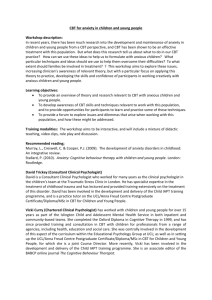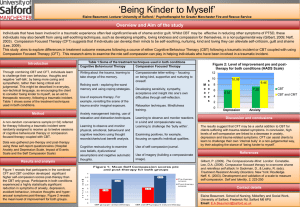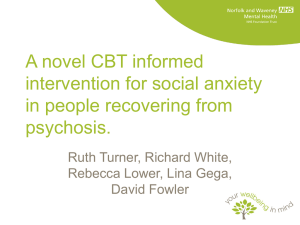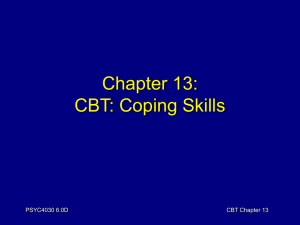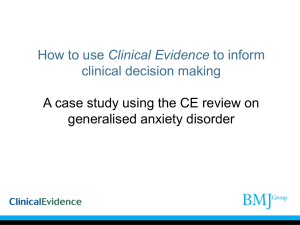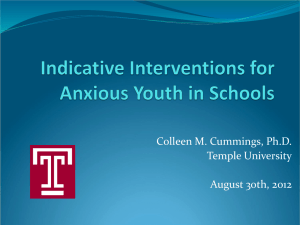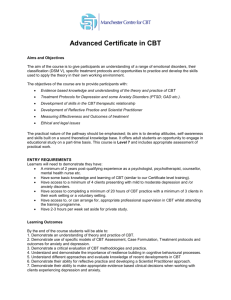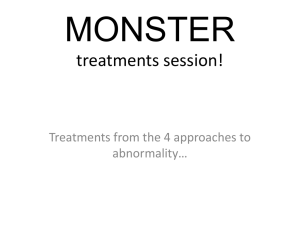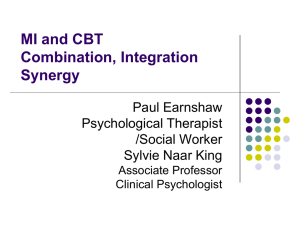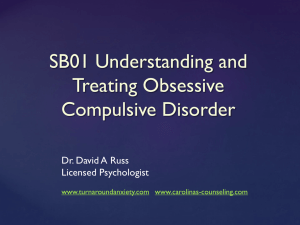PPT
advertisement
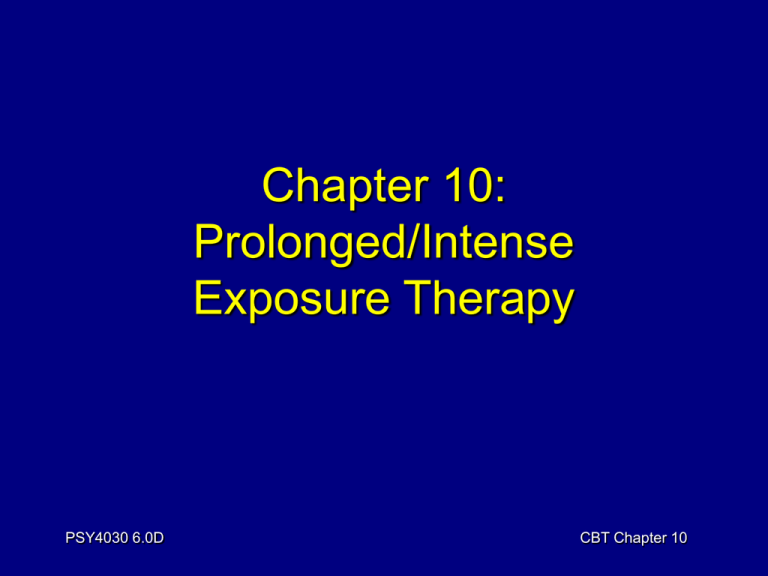
Chapter 10: Prolonged/Intense Exposure Therapy PSY4030 6.0D CBT Chapter 10 Development and Maintenance of Fear Two Factor Theory 1. Fears develop by classical conditioning: • A neutral event is associated with a fearful event • Fear elicited by neutral event PSY4030 6.0D CBT Chapter 10 Development and Maintenance of Fear Two Factor Theory 2. Fear is maintained by operant conditioning • Avoidance of fear inducing situation (negative reinforcement) Flooding attempts to uncouple the neutral situation from the fear by changing the operant contingency PSY4030 6.0D CBT Chapter 10 Flooding • Exposure to stimuli that produce high anxiety — No gradation • Exposure is long enough so that discomfort peaks and starts to decline • Extremely uncomfortable but often very brief therapy PSY4030 6.0D CBT Chapter 10 Flooding • Can be in vivo or imaginal • No competing response • Usually includes response prevention of maladaptive coping strategies Avoiding fight or flight response — Triggers the maintaining behaviour — • More effective than drugs in some cases PSY4030 6.0D CBT Chapter 10 Implosive Therapy • Extension of imaginal flooding 1. Use of hypothesized anxiety producing cues (the “why” factor) 2. Exaggerated scenes 3. Elaboration of scenes (visualizations may change) PSY4030 6.0D CBT Chapter 10 Eye Movement Desensitization and Reprocessing (EMDR) 1. • • • • Assessment and preparation Identifying the traumatic memory Identifying body sensations Assessing level of anxiety (SUD) Thinking of an adaptive belief PSY4030 6.0D CBT Chapter 10 Eye Movement Desensitization and Reprocessing (EMDR) 2. • • • • • Imaginal Flooding Visualization of traumatic image Verbalization of maladaptive belief Rapid visual tracking to simulate REMs associated with dreaming Assessment of anxiety Move onto final step once anxiety has been sufficiently reduced PSY4030 6.0D CBT Chapter 10 Eye Movement Desensitization and Reprocessing (EMDR) 3. Cognitive Restructuring • Imagine (formerly) traumatic image while verbalizing adaptive belief • Assessment of anxiety level PSY4030 6.0D CBT Chapter 10 Downside of Flooding 1. Higher dropout rates than more gradual therapies 2. Potential danger of becoming even more anxious 3. Given equal effectiveness, clients likely to choose systematic desensitization over flooding • • SD good for anxiety/avoidance behaviour Flooding is good for ritualistic acts/thoughts PSY4030 6.0D CBT Chapter 10




